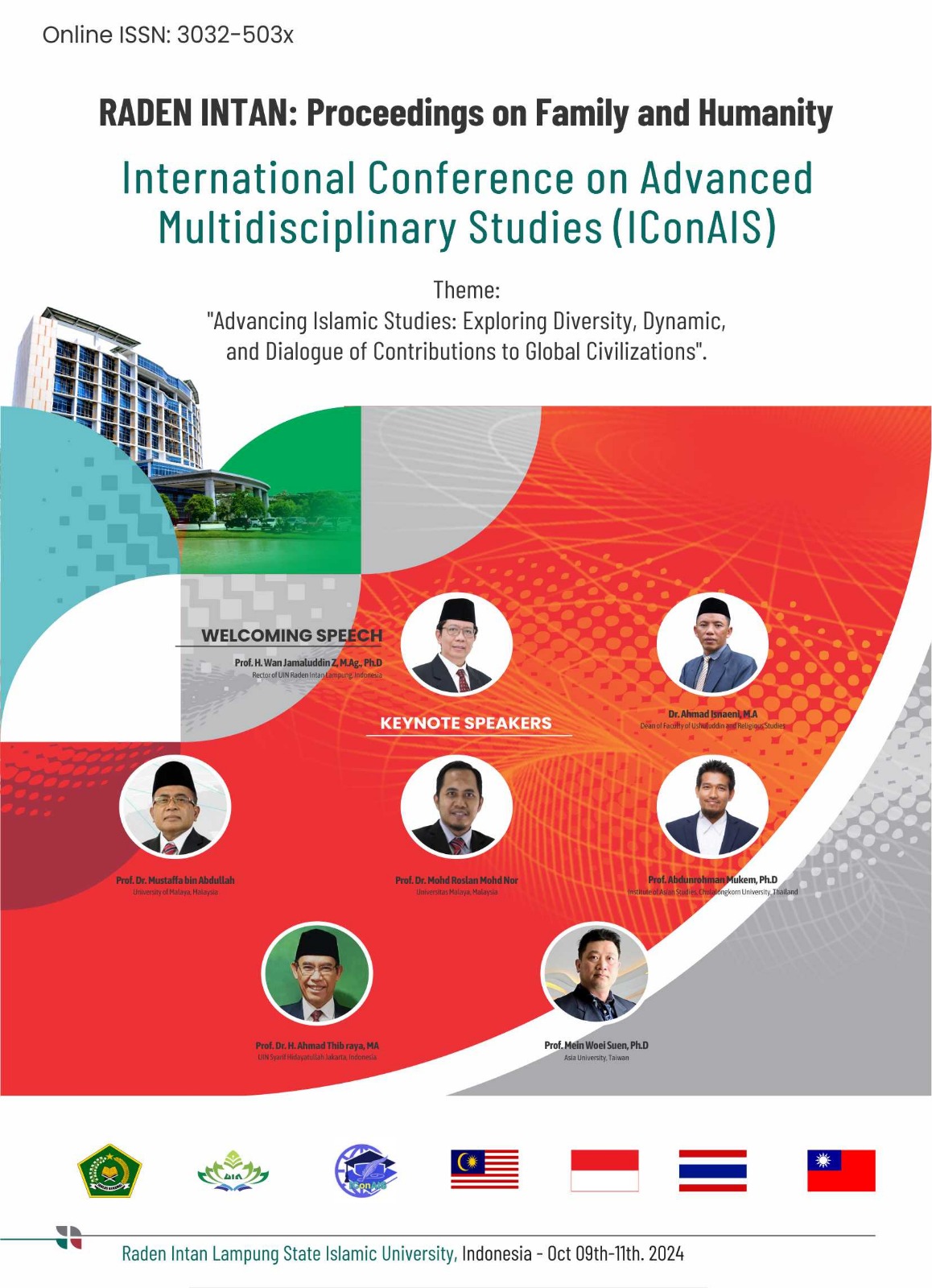Articles
Interreligious Relations in Early Islam and Their Relevance in the Modern Era: A Study of Umar’s Assurance of Safety to the People of Bayt al-Maqdis
Published 2025-07-30
Keywords
- Umar's Assurance, interreligious relations, Bayt al-Maqdis, Islamic governance, religious tolerance.
Copyright (c) 2025 Mohd Roslan Mohd Nor (Author)

This work is licensed under a Creative Commons Attribution 4.0 International License.
Abstract
This study explores Umar's Assurance of Safety to the people of Bayt al-Maqdis (Jerusalem) in 637 AD, a pivotal document issued by Caliph Umar Ibn al-Khattab, which guaranteed the protection of life, property, and religious institutions for non-Muslim inhabitants. Against the backdrop of rising religious hostilities in the modern era, as evidenced by a 2022 Pew Research study, this research seeks to understand how historical models of interreligious tolerance, such as Umar's Assurance, can inform contemporary efforts to foster religious coexistence. Using a qualitative approach, this study uses historical and textual analysis to explore the guarantees given to non-Muslims under Islamic rule. The research is based on primary historical sources and previous scientific discussions, focusing on the themes of justice, inclusivity, and religious freedom. The findings reveal that the Umar Guarantee establishes a comprehensive framework to protect religious minorities, ensure their right to worship, and maintain their places of worship. It also emphasizes economic justice through the jizya tax which is designed to be fair and not burdensome. The guarantee promotes inclusivity by allowing religious minorities, including Jews, to return to Bayt al-Maqdis after a period of exclusion. These principles contributed to long-term social stability and set a precedent for later models of government that emphasized pluralism and coexistence. The study concludes that the Umar Guarantee serves as a valuable historical precedent for contemporary models of government that seek to balance interreligious relations with legal protection for minorities. It provides important lessons for policymakers, especially in addressing religious pluralism and promoting an inclusive legal framework in diverse societies. The recommendations obtained from this study emphasize the need to integrate the historical principles of justice and tolerance into modern policies to promote peaceful interfaith relations.References
- Abu-Munshar, M. Y. (2007). Islamic Jerusalem and its Christians. https://www.torrossa.com/it/resources/an/5209166
- Al-Hibri, A. Y. (1992). Islamic constitutionalism and the concept of democracy. Case W. Res. j. Int’l L., 24, 1.
- Armstrong, K. (1997). Jerusalem: One city, three faiths. Ballantine Books.
- Berry, J. W., Lepshokova, Z., Collaboration, M., & Grigoryev, D. (2022). How shall we all live together?: Meta-analytical review of the mutual intercultural relations in plural societies project. Applied Psychology, 71(3), 1014–1041. https://doi.org/10.1111/apps.12332
- Cornille, C. (Ed.). (2013). The Wiley‐Blackwell Companion to Inter‐Religious Dialogue (1st ed.). Wiley. https://doi.org/10.1002/9781118529911
- Elamer, A. A., Ntim, C. G., & Abdou, H. A. (2020). Islamic Governance, National Governance, and Bank Risk Management and Disclosure in MENA Countries. Business & Society, 59(5), 914–955. https://doi.org/10.1177/0007650317746108
- El-Awaisi, A. al-Fattah. (2000). Umar’s Assurance of Safety to the people of Aelia (Jerusalem): A Critical Analytical study of the Historical Source. Journal of Islamicjerusalem Studies, 3(2), 47–89.
- Esposito, J. L., & Watson, M. M. (2000). Religion and global order. University of Wales Press. https://ixtheo.de/Record/315402601
- Goitein, S. D. (2010). Studies in Islamic history and institutions (Vol. 5). Brill. https://books.google.com/books?hl=id&lr=&id=cmn8U8uNtFAC&oi=fnd&pg=PR7&dq=Goitein,+S.+D.+(1971).+Studies+in+Islamic+History+and+Institutions.+Brill.&ots=1Ew8gKJbYP&sig=DCnQvb9fiXIAalGIFblsGxde02I
- Griffel, F. (2021). The formation of post-classical philosophy in Islam. Oxford University Press. https://books.google.com/books?hl=id&lr=&id=Kc0vEAAAQBAJ&oi=fnd&pg=PP1&dq=Griffel,+F.+(2021).+The+Formation+of+Post-Classical+Philosophy+in+Islam.+Oxford+University+Press.&ots=5giu8Voo3u&sig=DMtc4wlzAL9R8iaTHqZBd3qb_V4
- Hitti, P. K. (1968). History of the Arabs: From the earliest times to the present. Papermac. https://ixtheo.de/Record/1148307737
- Hodgson, M. G. (1974). The venture of Islam: Conscience and history in a world civilization, Vol. 3. The University of Chicago Press. https://www.fulcrum.org/concern/monographs/z316q173f.html
- Lajnah Pentashih Mushaf Al-Qur‟an Departemen Agama RI. (2001). Al-Qur‟an dan Terjemahnya. Semarang: As-Syifa. https://pustakalajnah.kemenag.go.id/detail/135
- Lapidus, I. M. (2014). A history of Islamic societies. Cambridge University Press.
- Le Strange, G. (2010). Palestine under the Moslems: A Description of Syria and the Holy Land from AD 650 to 1500. Cosimo, Inc. https://books.google.com/books?hl=id&lr=&id=VFkqLLN9E98C&oi=fnd&pg=PR19&dq=Le+Strange,+G.+(1890).+Palestine+Under+the+Moslems:+A+Description+of+Syria+and+the+Holy+Land+from+A.D.+650+to+1500.+London:+Alexander+P.+Watt.&ots=UQJrMK8sUO&sig=C1qnwYNEAldVj-Onn9rhU7JTBys
- Pew Research Center. (2022). World Jewish Population, 2021 | SpringerLink. https://link.springer.com/chapter/10.1007/978-3-030-99750-2_8
- Rane, H. (2022). Peaceful interreligious relations in Islam derive from covenants and treaties. Melbourne Asia Review, 10. https://research-repository.griffith.edu.au/items/12e1b385-8de6-4e15-bcab-6b81e92ac045
- Rosadi, A., Aliyah, A., Ramayanti, A., & Ruswandi, U. (2024). Research Studies on Pluralism and Multiculturalism. JHSS (JOURNAL OF HUMANITIES AND SOCIAL STUDIES), 8(1), Article 1. https://doi.org/10.33751/jhss.v8i1.9567
- Statista. (2023). Global digital population as of January 2023. Statista. https://www.statista.com/
- Strange, G. L. (2008). Palestine under the Moslems: A Description of Syria and the Holy Land. Gorgias Press. https://doi.org/10.31826/9781463212766

